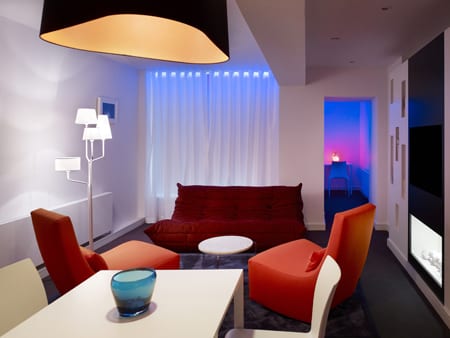Hospitality Design (HD) magazine and Culintro, a culinary trade organization in New York City that brings together restaurant professionals, have teamed up to bring a monthly online Q&A with some of the nation’s top restaurant designers. Each month, we will feature a Q&A with an industry leader, talking about his/her newest project, the industry, what works, and what’s next.
 Richard McCormack
Richard McCormack
Richard McCormack Design
Costa Mesa, California
It wasn’t until his first job out of college that Richard McCormack realized his passion for interior design. But realizing the emotional connection that design – specifically restaurant design – can create, he was immediately drawn. Which is probably why he spent 14 years as the head of Cheesecake Factory’s in-house design team, where he touched the lives of so many, designing more than 150 restaurants coast to coast. Now he has branched out on his own and is working on several BJ’s Restaurants, the Vault 350, a nightclub/live entertainment complex and a redo of the Ritz Restaurant, both in Newport Beach, California, a Tuscan restaurant in the Washington, DC, area, and a remodel of another iconic Orange County Italian restaurant, among others. He chats about what he learned from his days at Cheesecake Factory, keeping things in perspective, and why attention to detail is so important.
HD: Did you always know you wanted to be a designer?
RM: My path to becoming a designer was very serendipitous. I really had no aspirations to become a designer until I was actually working my first job out of college. Until then I was only focused on the technical side. While with a small hospitality design firm (Hatch Design Group) I experienced the power and strong emotions of what your imagination could create and how deeply it can affect people when realized. It was a profound epiphany that changed the course of my career.
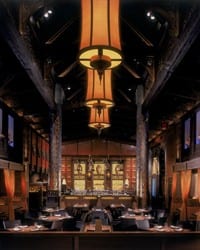 HD: What are some of your first memories of design?
HD: What are some of your first memories of design?
RM: I always enjoyed drawing and demonstrated an above average ability at it. Looking back it’s amazing I didn’t go into automotive design because as a child I’d spend hours reassembling plastic model cars I had constructed by trading pieces from one to another until I had a creation all my own. This progressed into re-sculpting the bodies with clay in order to achieve exactly what I was imaging. My interest in architecture was first ignited by a drafting class in junior high school, where I discovered a fascination with straight edges, triangles, and mechanical pencils.
HD: How did you end up where you are today?
RM: My career path is probably a little unorthodox compared to most. I attended a two-year architecture program at a local community college and found the need for a full-time job upon its completion. Answering an ad in the school’s job placement center landed me an interview with Hatch Design Group, which specialized in hospitality design, which at the time I had no idea there were companies doing that. Beginning as a draftsman on the kitchen side of the business I eventually discovered I had an aptitude for interior design and transitioned to the front-of-the-house design. Ultimately I worked my way up through the ranks of the company to become the only non-family member partner. After 17 years with that firm, I was asked by the owner of the Cheesecake Factory to join his company (which had recently gone public) and start up an in-house design department. During 14 years with them as vice president of design, I oversaw the design of over 150 restaurants coast to coast including their Grand Lux Cafe and RockSugar concepts. I always knew the third and final phase of my career would be out on my own so after the successful opening of the first RockSugar I made that move. Of course doing so in September 2008 wasn’t the best timing but it’s been the best experience of my working life.
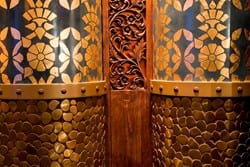 HD: What did working at Cheesecake Factory teach you?
HD: What did working at Cheesecake Factory teach you?
RM: It was an incredible education on how to grow a company and not lose sight of your company values. I watched David Overton go from five restaurants to 155 and saw firsthand what it takes organizationally to successfully do so. The most important lesson by far is to hire the right people. You must recognize you can’t do everything yourself and be willing to bring in people who can do the things you aren’t qualified to do or don’t wish to do.
HD: Why hospitality?
RM: Nothing, except possibly set design, offers as much opportunity to be creative than hospitality design. I figured if I’m lucky enough to be an interior designer why not do it in an area that allows me to best express my creativity. We who do it are creating fantasylands for people to visit and escape the ordinary. Part of the pleasure of dining out is the ability to experience an environment unlike any available to you through work or home.
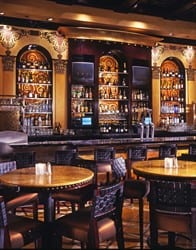 HD: What do you love about it?
HD: What do you love about it?
RM: My greatest joy is when I complete a project and can consider the client a good friend. My favorite projects are the ones where there is a close collaborative process with the client and the end result is better than if done solitarily.
HD: Why did you decide to go out on your own?
RM: My main reasons for starting my own firm was to have a variety of projects and to establish a working environment conducive to good design. Once RockSugar [in Century City, California] was finished, I believed I had gone as far with the Cheesecake Factory creatively as I could. It was unlikely there would be the challenge of a fourth concept and I was disenchanted with the corporate culture. I felt my experience with a small hospitality design firm combined with a large restaurant corporation would be a strong foundation on which to build a successful hospitality design firm.
 HD: What has been your greatest lesson learned so far?
HD: What has been your greatest lesson learned so far?
RM: To keep things in perspective and balanced. Nothing we are doing is life or death circumstances. In the end you won’t be saying, ‘I wish I had worked more.’
HD: Motto to live by?
RM: ‘Life’s too short.’ I say this to remind my staff and myself to not get too stressed about work but to concentrate on the things in life that really matter-family, friends and fun.
HD: What restaurant do you love for its design (one that you didn’t design)?
RM: One of my favorite restaurants for design is Lavo at the Palazzo hotel in Las Vegas. I’m drawn to the incredible attention to detail throughout and the emotion the space invokes when you enter. As we try to do with our designs, you see something new, something you didn’t notice before, each time you go there.
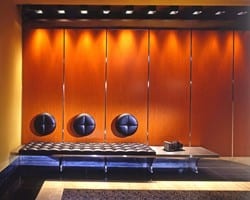 HD: What are the keys to a successful restaurant?
HD: What are the keys to a successful restaurant?
RM: Something I’ve believed my whole career and was further reinforced at the Cheesecake Factory is that there is no substitute for great food and excellent service combined with a visionary operator. Give a guest these things and they’ll overlook almost any other sins-bad design, bad location, etc. Most people are taken aback when I don’t put design near the top of the list but I’d sit at a card table on a box in an alley if the food was incredible and the service impeccable.
HD: What are the biggest challenges in hospitality today?
RM: The growing sophistication of the average person’s sense of design is an incredible challenge. With the focus on design through the media with networks such as HGTV or the myriad number of magazines on the subject we are exposed to good design as never before and because of that it is now a much greater challenge for a design to truly impress someone. It’s a sense of ‘been there, seen that’ mentality or ‘what are you going to do to impress me now?’ This is also what makes hospitality design more exciting today than ever.
 HD: What cities are you watching in terms of development and design?
HD: What cities are you watching in terms of development and design?
RM: I always have my eye on New York and Las Vegas as sources of inspiration. They are not only great cities to see outstanding design but all those great projects also help keep the competitive fires burning. Seeing great design makes me want to create great design.
HD: What’s your dream project?
RM: I’d be very excited to have a boutique hotel project in a tropical Asian location such as Thailand or Indonesia where we could use the vast knowledge we gained from developing RockSugar. It was an extensive education in Buddhism, Chinese, Thai, and Indian cultures. It was easily the most research I’ve ever done on one project.
Projects from top right: RockSugar, Century City, California; Grand Lux Café at the Beverly Center corridor, Los Angeles; Kairak, Los Angeles; and Metropolis, Irvine, California, an upscale billiard/nightclub

